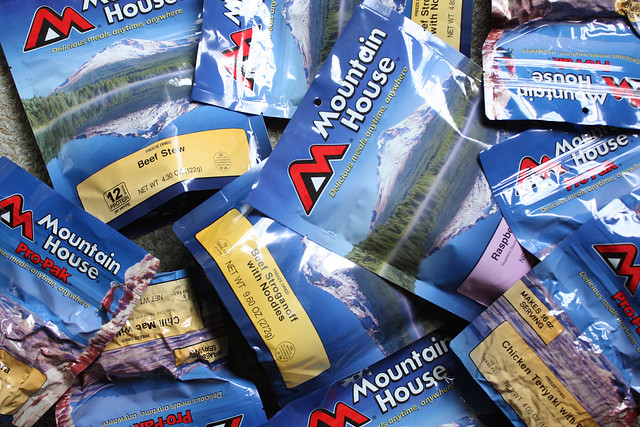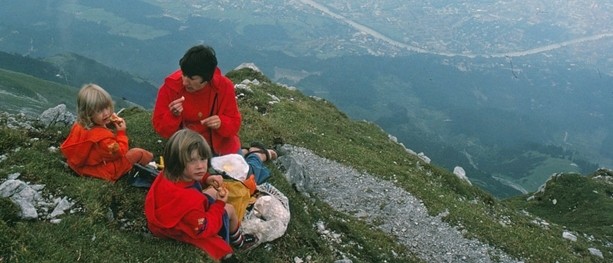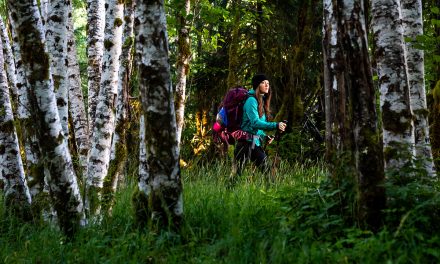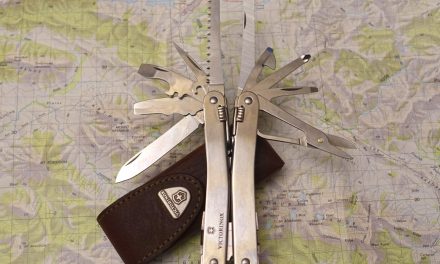My sister and I still moan loudly and roll our eyes about Christmas holidays spent camping in the Warrumbungles. Or the family “picnics”, which were really a 3 hour hike in disguise. But secretly, growing up with two very keen bushwalking parents has been an amazing gift. So when Neil asked me to guest post on hiking nutrition, I knew I had to share my tips with you… Just don’t share this with my parents. They are still actively hiking around the world in their 70’s and leading walks for the Victorian National Parks Association. But still in the dark about how much my sister and I really loved our outdoor upbringing.
Tip 1: Stay hydrated
Water is essential for life and your body’s main tool at regulating temperature. As you become dehydrated there is a gradual reduction in both physical and mental performance. Your hike starts to feel a whole lot harder than other trails and your recovery can take longer. A loss of fluid equal to 2% of body mass is sufficient to cause a significant decrease in performance – that’s a 1.4kg loss in a 70kg person.
A good way to monitor your sweat losses is to weigh yourself before and after activity. You may like to try this before and after a day hike. Make sure you towel dry any excess sweat off before jumping on the scales, and aim to weigh yourself naked so that you’re not weighing any sweat lost in clothing. As a general rule you should aim to keep this sweat loss to less than 1kg, which equates to roughly a litre of lost fluid. Remember that thirst is not a good hydration guide. Generally, by the time you feel thirsty there has been a significant fluid loss.
For light bushwalking, go for water as the general rule. But if you’re embarking on an intense or endurance hike a specially formulated sports drinks like Gatorade or Powerade will be very helpful. An important characteristic of any sports drink is that it contains carbohydrate, generally in the range of 4 to 10%. Carbohydrate is needed as an energy source as the body’s glycogen stores are likely to be depleted after 90 minutes of continuous, moderate intensity activity. They also contain salt or sodium which speeds up the body’s absorption of the fluid and helps replace electrolytes lost in sweat.

Tip 2: Fuel up and refuel
You also need to plan ahead so you have enough fuel on board. This includes lightweight, but highly nutritious food in your day or overnight pack, but also in your muscles as glycogen. The science of carbohydrate loading is carefully tailored to different sports, body types, and activity. But the general principles are to boost your intake a day or two before a hike, keep topping up as you go, and pick the right carb-protein combo for rapid recovery.
Sports Dietitians Australia are the experts in performance nutrition and this fact sheet is a fantastic guide to fuelling fitness: Eating and Drinking During Exercise
Having a working understanding of the glycemic index is also helpful. Low GI foods, like oats, certain grainy breads, pasta, orchard fruits, and yogurt offer a sustained release of blood glucose and energy levels. They are great choices for breaky at home before a hike, or to make up your fuel at a lunchtime stop. But there are other times that you may need the boost from a rapid, releasing high GI food like jelly beans, watermelon, or snack bag of cornflakes. Read this Sports Dietitians Australia fact sheet: The Glycaemic Index and Sports Performance
Tip 3: Recover well
Professional sportspeople may go straight to the ice bath and sip a protein shake while their dietitian prepares a perfectly balanced recovery meal. But this is a little hard up a mountain, when you still have a tent to pitch and a fire to light. The key is to munch or sip your way through a snack while you unpack and delegate someone to get dinner underway. UHT Flavoured Milk drinks are a great choice and milk has been studied as a perfect recovery food.
Research has found that the period straight after a session of exhaustive exercise is the best time for the body to refill it’s glycogen stores. To maximise the rate your body resynthesises glycogen, aim to eat about 50 to 75 grams of carbohydrate within 30 to 45 minutes after exercise. Further research into recovery nutrition has shown that eating carbohydrate together with protein can increase the rate at which your body refills its glycogen stores which helps maximise these stores for the future and also improve your endurance performance as well. The addition of protein in your recovery nutrition will also aid in muscle repair, and reduce the amount of exercise-induced muscle damage.
Read this Sports Dietitians Australia fact sheet: Recovery Nutrition
Tip 4: Planning makes perfect
Explore tips and advice from experienced walkers – there’s a whole world of ideas for highly nutritious hiking recipes. Even those for home dehydrators to turn your signature curry into a compact, lightweight dinner pack that will be fresh and ready come day 3. Visit any camping or outward bound store to see the commercial range. You’ll need to manipulate your menu planning to take into account total weight and how you use up perishable items as the days roll by. For example ditch the cans of tuna in favour of foil pack flaked tuna flavoured with lemon and pepper or sweet chili. And move from fresh fruit to fruit snack packs as your hike evolves.
Flavour fatigue is another common hurdle for any person in endurance events. If the 1000th sip of sports drink is going to turn your stomach, make sure you have different sweet and savoury options available like wholegrain and nut bars, bananas, cold, roast potatoes, or other suitable fuel handy.
And finally, if in doubt, aim for more. Always overestimate the fuel and fluids you will need. Heck we all know how the hungries can hit. My sister and I would often finish our trail mix by the 1km mark. But most of all, plan for emergencies like contaminated waterholes, changes in weather, or missing signposts that lead you astray. Make it a rule to always carry survival ration packs and water purifiers – even if you are just heading out for a “picnic”.
Got anything to add? Anything else you need to know? Or want to thank Emma for her post? Please let us know by commenting below.
Are you interested in more from Bushwalking Blog? You can either sign-up for the e-mail newsletter, or get updates via the RSS feed, Facebook or Twitter.





